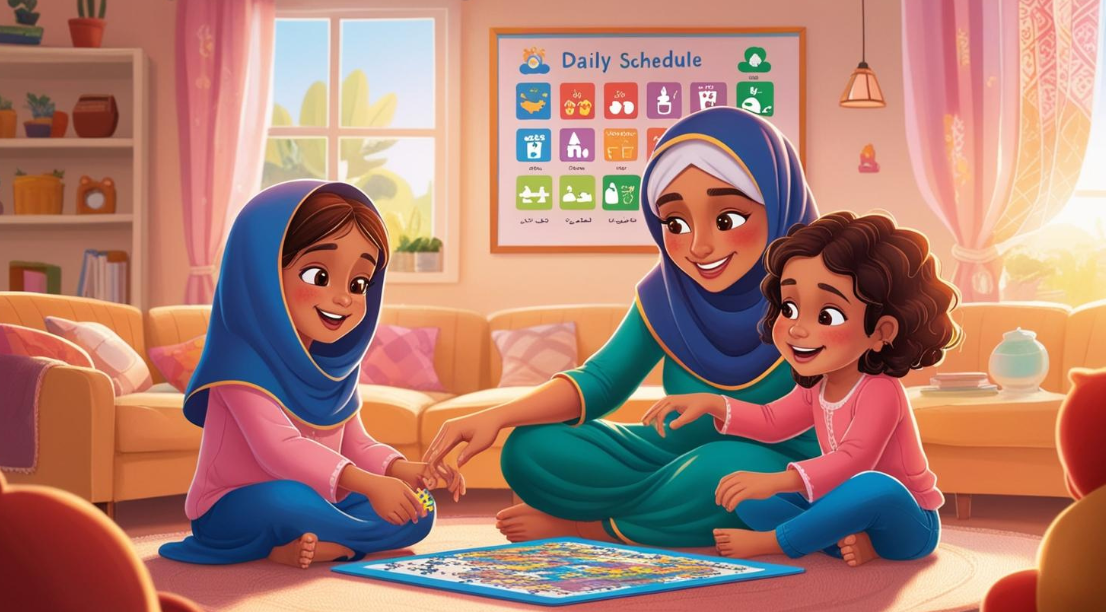Types of Parenting Styles and Meaning: A Guide to Raising Happy Kids
Hey there, friend! Let’s talk about something we all experience but don’t always think about—parenting. Whether you’re a parent, planning to be one, or just curious, understanding the types of parenting styles and meaning can be a game-changer. It’s like having a secret map to raising happy, confident kids. So, grab a cup of coffee (or juice, if that’s your thing), and let’s dive in!
What Are Parenting Styles, Anyway?
Parenting styles are like recipes. Some are strict, some are flexible, and some are a mix of everything. They’re the way parents raise their kids, from setting rules to showing love. Psychologists have identified four main types of parenting styles and meaning, and each one has a big impact on how kids turn out.
Let me tell you a quick story to set the stage.
The Tale of Two Moms
Imagine two moms at a park. Mom A is super strict. Her kid, Mia, isn’t allowed to climb the jungle gym because it’s “too dangerous.” Mom B, on the other hand, lets her son, Jake, explore freely. She’s nearby, keeping an eye out, but she’s not hovering.
Fast forward 10 years. Mia grows up anxious, always second-guessing herself. Jake? He’s confident but sometimes struggles with boundaries.
What happened here? Their moms used different types of parenting styles, and it shaped who they became.
The 4 Types of Parenting Styles and Meaning
Now, let’s break it down. Here are the four main styles, what they mean, and how they affect kids.
1. Authoritative Parenting: The Balanced Boss
Think of this as the “Goldilocks” style—not too strict, not too lenient, just right. Authoritative parents set clear rules but also listen to their kids. They’re like a coach: firm but fair.
- What it looks like:
- Rules are explained (“We don’t hit because it hurts others”).
- Kids get a say (“What do you think is a fair bedtime?”).
- Mistakes are teaching moments, not reasons for punishment.
- How it affects kids:
- They grow up confident, responsible, and good at solving problems.
- They’re also more likely to be happy and successful in life.
2. Authoritarian Parenting: The Strict Sergeant

This style is all about rules, rules, and more rules. Authoritarian parents are like drill sergeants—they expect obedience, no questions asked.
- What it looks like:
- “Because I said so” is their favorite phrase.
- Punishments are common, and explanations are rare.
- Kids have little say in decisions.
- How it affects kids:
- They might follow the rules, but they often feel anxious or resentful.
- They may struggle with self-esteem and decision-making.
3. Permissive Parenting: The Cool Buddy
Permissive parents are super laid-back. They’re more like friends than authority figures. Rules? What rules?
- What it looks like:
- Kids get to do pretty much whatever they want.
- Parents are loving but don’t set many boundaries.
- Bedtime? More like “whenever you feel like it.”
- How it affects kids:
- They might feel loved but often struggle with self-discipline.
- They can have trouble following rules at school or work.
4. Uninvolved Parenting: The Distant Observer
This style is, well, not really a style. Uninvolved parents are hands-off, sometimes to the point of neglect.
- What it looks like:
- Parents are emotionally distant or too busy to be involved.
- Kids are left to figure things out on their own.
- Basic needs might be met, but emotional support is lacking.
- How it affects kids:
- They often feel unloved or unimportant.
- They might struggle with relationships and self-worth.
Why Does This Matter?
Here’s the thing: the types of parenting styles and meaning aren’t just labels. They shape how kids see the world, handle challenges, and build relationships.
Think about it. If you grew up with strict parents, you might be great at following rules but struggle with creativity. If your parents were super laid-back, you might be super chill but find it hard to stick to a schedule.
What’s the Best Style?
Drumroll, please… the authoritative style usually comes out on top. It’s like the MVP of parenting. Kids raised this way tend to be happy, confident, and successful.
But here’s the kicker: no parent is perfect. We all have moments of being too strict, too lenient, or just too tired to care. And that’s okay! The goal isn’t to be perfect—it’s to be aware and do your best.
A Little Story to Wrap It Up
Let me share one more story. My friend Sarah used to be super strict with her son, Max. She wanted him to be “perfect.” But one day, Max broke a vase while playing. Instead of yelling, Sarah took a deep breath and said, “It’s okay. Let’s clean it up together.”
That small moment changed everything. Max started opening up to her more, and Sarah realized that being a little less strict made their relationship stronger.
A Few More Things to Keep in Mind
Parenting isn’t one-size-fits-all. Life is unpredictable, and kids have different personalities, which means what works for one child may not work for another. That’s why flexibility is key.
For example, some kids thrive with structure, while others need more freedom to explore. The best approach is to find a balance between setting boundaries and allowing independence.
Can You Mix Parenting Styles?

Absolutely! No parent fits neatly into one box all the time. You might be authoritative most of the time but occasionally lean into permissive or authoritarian parenting. That’s normal!
The key is to be mindful of your approach and adjust as needed. If you notice your child is struggling with self-discipline, you might want to add more structure. If they seem anxious or fearful, offering more warmth and communication can help.
Parenting in the Digital Age
Modern parenting comes with new challenges—social media, screen time, and online safety. While past generations focused on outdoor play and traditional discipline, today’s parents must navigate digital influences.
Here are some quick tips to blend positive parenting with today’s tech-driven world:
✅ Set healthy screen time limits while encouraging offline activities.
✅ Use social media wisely—be a role model for responsible online behavior.
✅ Encourage open conversations about internet safety and peer pressure.
Final Words: Trust Yourself!
At the end of the day, parenting is a journey, not a destination. You’ll make mistakes, learn from them, and grow alongside your child. The most important thing is to show love, patience, and understanding.
No matter which style you lean toward, remember: kids don’t need perfect parents—they need present parents. 💙
